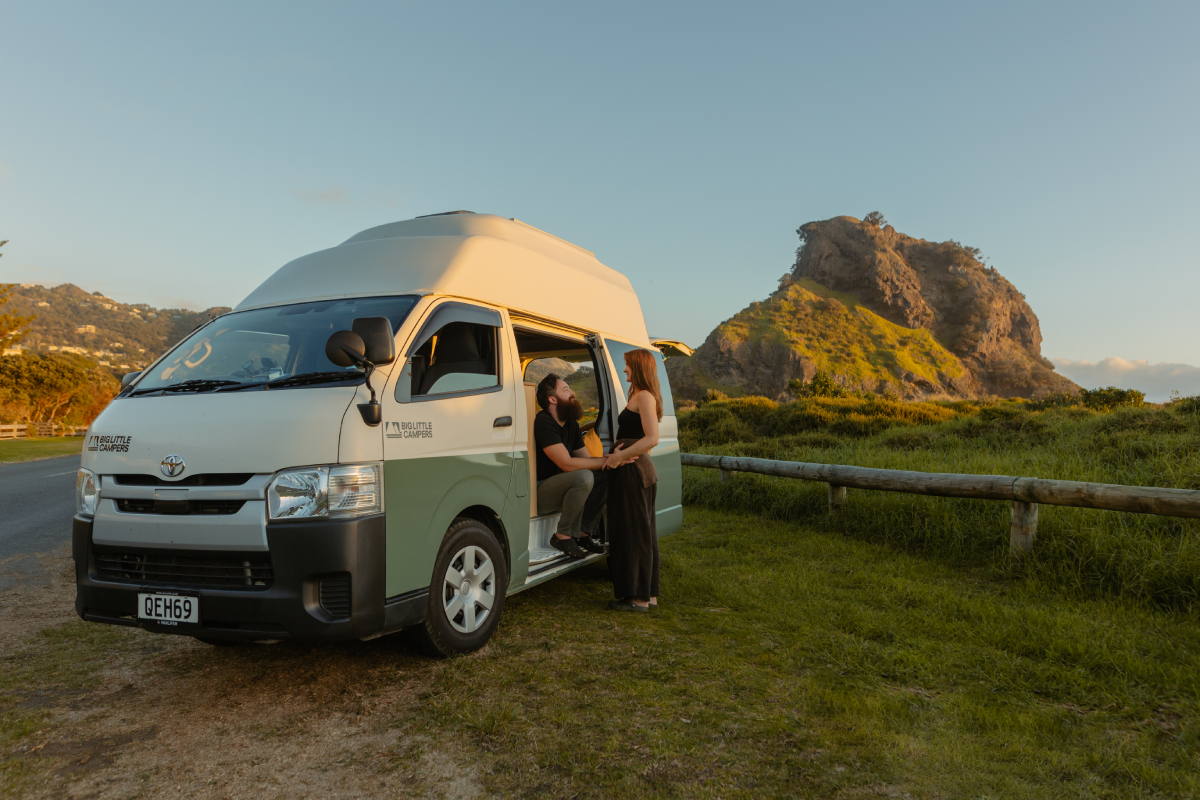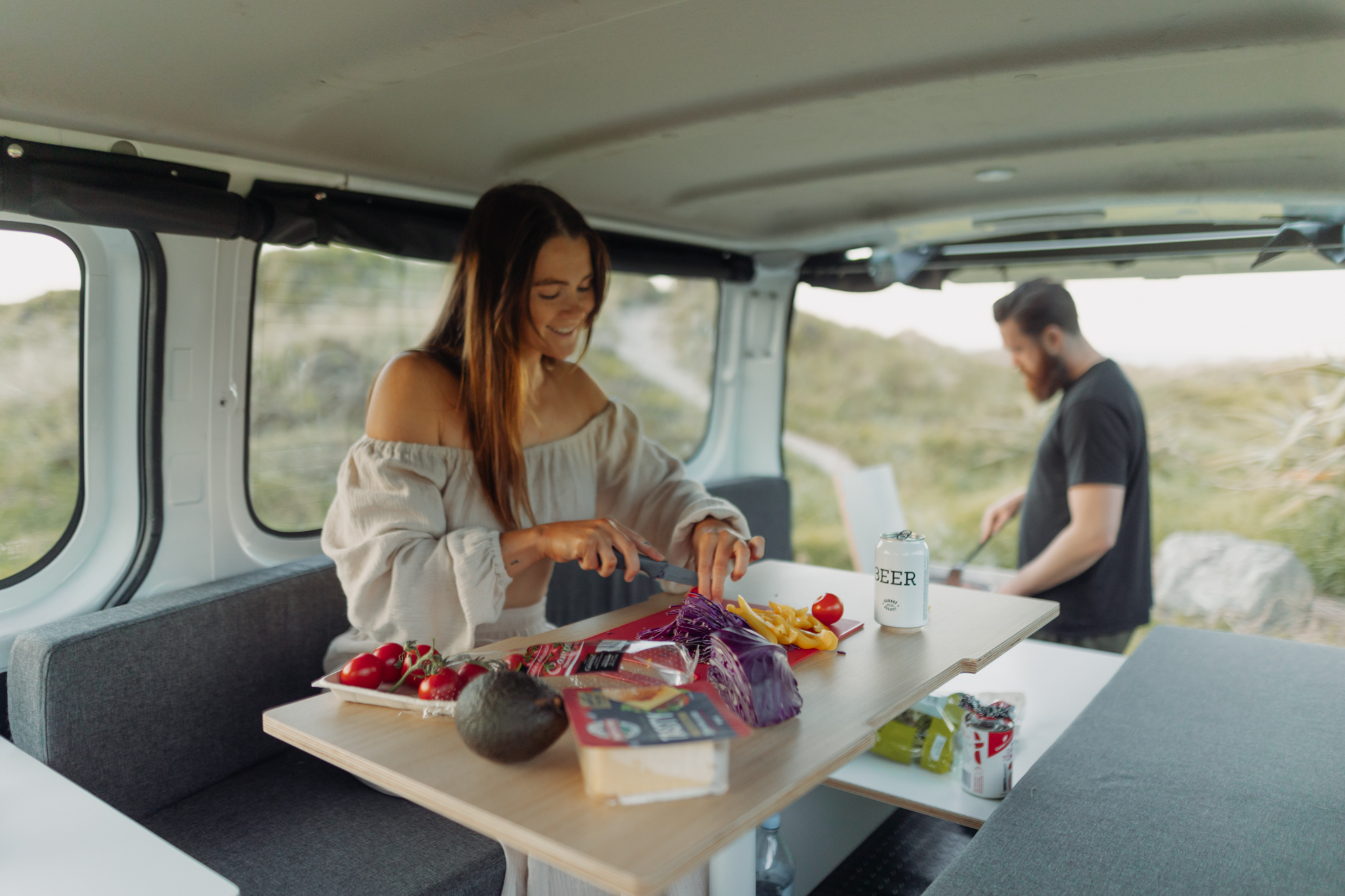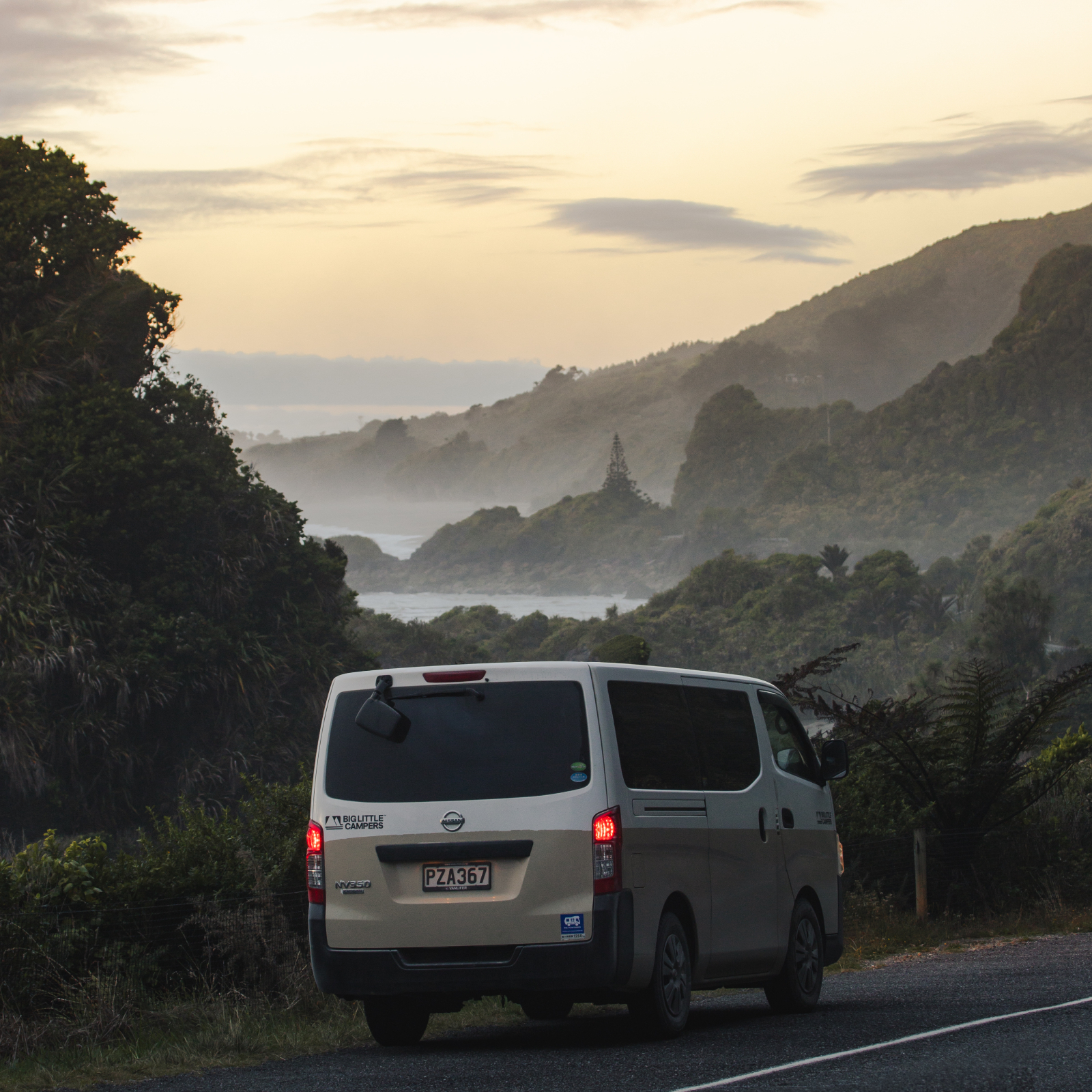Chat with a human
Let us help you pick the perfect camper for your once in a lifetime adventure
Family friend and experienced vanlifer Josie Gibbs has kindly contributed another awesome guide, this time focussing on some of her favourite hotspots and travelling insights for taking on the South Island.
Getting there
The only way to get to the South Island (unless arriving by plane) is to cross the glittery blue Cook Strait on either the Interislander or Bluebridge Ferries. If you find you've adopted a layer of dust on your skin thus far and can no longer see your tan lines, I’d recommend getting a cabin with your ticket, it’s roughly $20 more and you have access to a sweet cabin window, a bed, and more importantly: a shower! Regardless of your sailing date, you can often manage to get on an earlier ferry by simply turning on the day and hoping for someone else's cancellation, this has worked for me 9/10 times.
Here are my top recommendations for the South Island.
Marlborough Sounds, The French Pass, and Kaikoura
There are two grand options as you exit the ferry in Picton, the small port city at the top of the South Island. Head through the winding waterways of the Marlborough Sounds, which will lead you to the gateway of Te Aumiti / French Pass, or travel down through Blenheim to Kaikoura and catch your breath at the miles and miles of wild coastline in which the sky melts into the dusk.
If you choose the first option, there are handfuls and handfuls of humble DOC campgrounds nestled into the fringes of native forest and coast. A fair number of these are your classic long-drop campsites with next to no facilities and limited number of sites to park up on, but they do boast gloriously quiet views.
Dramatic views however, belong to the French Pass. My favourite campground is found at the tip of the pass and is simply called French Pass Campground. It has a toilet and no shower, but clear waters that come to light at night with sparkling luminescence. Swim with dolphins, seals, and stingrays or discover the hidden walkway (unmarked) along the farmland cliff top and below age-old conifer trees. Be sure to fill up with petrol before you hit the cliff-top gravel road and stock up on chocolate; a block of Whittakers (New Zealand's premium chocolate brand) can cost up to $10 when you're in the middle of nowhere at some ancient dairy (corner-shop).
Other notable campgrounds in Te Aumiti / French Pass are Eliane Bay and Tawa Bay.
If you've chosen this route around the top of the South then The Barn campground in Marahau at the beginning of the famous Abel Tasman walkway should be your next stop. The facilities at this campground remind one of a Canadian ranch mixed with a yoga retreat. Facilities include a food truck, yoga space, large kitchen with an open fire, well stocked store with local artists’ illustrations and stickers, and a laundry room. When I visited, it was hosted by a number of good looking work-aways who were exceptionally clued up on all walk options for the Abel Tasman. There's also an epic pizzeria just down the road called The Park Café.
Central Otago, Queenstown and The Milford Sounds
As you travel further down and inland, south in particular, towards the tourist town of Queenstown, The Southern Alps soon fill the sky above. The Southern Alps run almost the entire length of the South Island. The section of these ranges most gazed upon are The Remarkables which give their backdrop to Queenstown, a tourist Mecca for adventure seekers.
Reverse your wayfarer wagon up however, as there are delights to be found before you set forth to the adventure capital of New Zealand.
Central Otago and The Mackenzie Basin show off some unbelievably scenic views, Lake Tekapo (Takapō) being a happy favourite. Lake Tekapo is a large lake and glacial valley which is a rich turquoise colour, and between the months of November and January, is covered in a blanket of purple and pink wild flowers (well they're actually an invasive weed) called Lupins. Just imagine your campervan nestled into a nook on Lake Tekapo surrounded by shades of sapphire blues, rouge pinks, and lilac purples. Did we also mention that the Mackenzie district is part of the Aoraki Mackenzie International Dark Sky Reserve? So if you are wanting to spend your day running through wildflowers and your evenings sleeping under stars so bright you could almost fill your pockets with them, then this is a must.
Although many people wild-freedom camp around the east end of this lake (illegally), there are two recommended campgrounds closer to the township, Lake Alexandra Campground and Lakes Edge Holiday Park, both of which offer fabulous facilities, are large and family friendly but relatively busy. A better and cheaper suggestion would be to cruise over to the neighbouring lake of Lake Pukaki which also happens to be the driveway to the almighty Aoraki / Mount Cook and shares equally as beautiful sights as Lake Tekapo with the addition of the mountain itself. Navigate to Lake Pukaki Freedom Camping Site at the southern end of the lake to find an idyllic camping spot. There is no fresh drinking water here, and it is only a maximum of one night's stay, however, there are two long drops, sometimes with toilet paper, sometimes without.
If however you wish to camp under the mountain itself and listen to the rumble of avalanches (okay, landslides) throughout the night then White Horse Hill Campsite (DOC) is your best option, but make sure to roll on those woollen socks, as this spot gets cold! Facilities include a cooking shelter and flushing toilets!
Once you've had your fill of mountain air and are craving the type of facilities and luxuries only a town can offer, then head to Queenstown through the Lindis Pass. The Lindis Pass links the Mackenzie Basin with Central Otago and is a dazzling drive. The mountain pass itself is covered in tussock grass the colour of butter syrup and creates a stunning and classic contrast to the dusted white tips of snow on the mountains.
The Milford Sounds
A treasure trove of waterfalls, rainforests, and scattered light doused in rain and mist are what you will find in the Fiordland National Park south-west of the South Island. Most people follow this road to jump on a boat tour of the fjords, as they are best seen from the water and in rainy weather!
The drive itself is wondrous. Drive through Te Anau, which is the starting point to the Milford road, and to Milford Sounds. Give yourself a day and night, as you'll want to stop many times to discover natural wonders every which way, some of the most noted stops include Eglinton Valley, Mirror Lakes, Lake Gunn, and The Chasm.
The Craving Adventure travel blog has a detailed guide on this specific drive and it is absolutely worth a read, you can find it here.
The Fiordland National Park is also the starting point for three of the great nine walks of New Zealand: the Routeburn, Kepler, and Milford tracks, none of which are day walks and are for the enthusiastic and intermediate hiker. Luckily there are many day walks in the area; Key Summit, Gertrude Saddle, and Marian Lake are among the best.
Reception disappears almost immediately as you enter the Milford road and leave Te Anau. The same can be said for gas and food supplies so make sure you fill up and stock up before hitting the misty roads.
Official camping options in Te Anau and Milford are far and few between. Rainforest Campervan Park is the official tourist destination accommodation and you will need to book ahead as it does get packed!
Knobs Flat is our preferred privately owned campsite option. Set about halfway between Te Anau and Milford, it’s quiet, has hot showers, as well as a kitchen and laundry facilities.
Luckily there are also a good scattering of beautiful DOC campsites in the area – keep in mind some of these are small and cater to tent sites as opposed to campervans. Here are the ones that are suited to small–medium sized campervans:
- Cascade Creek Campsite (closest to The Milford Sounds, lake views, no toilets but fresh water from the stream)
- Kiosk Creek (DOC) (a relatively small campsite with stunning views, a fire pit but no fresh water)
- Totara campsite (great for larger campervans and well sheltered)
- Upper Eglinton Valley (quiet, beautiful larger than life valley views, not suitable for large campers but ideal for small–medium camper vans, classic long drop loo)
All the DOC sites are $15 per person and need to be paid in cash on your arrival.
Make sure you take note that there is absolutely no freedom camping in the Milford Sounds National Park.
Exploring the Milford Sounds is the perfect way to conclude your visit to the south side of paradise.
New Zealand,the ultimate destination for a campervan holiday
In a humble summary, in which we wholeheartedly acknowledge the hundreds of places that aren't in this article and the stellar ones that are, we determinedly encourage you to begin your journey in planning an unrivalled campervan holiday in New Zealand, Aotearoa.
Travelling New Zealand in a campervan is a rite of passage for those freedom-seeking New Zealanders and a treat to those from across the Pacific. Watching the light dropping through leaves like confetti on the road in front of you as you meander down some of the most scenic passages in the world is a once in a lifetime bucket list opportunity. One is often reminded that the ache for adventure and for untouched and unrivalled natural beauty is fostered here in New Zealand, the ultimate destination for your campervan holiday.
Have a look at Camplify and HelpX, ask friends of friends for local connections, download TOPO and Campermate, make yourself familiar with websites such as MetService and Google Maps, talk to the fish-and-chip shop owner, the dairy owner, find a New Zealand travel influencer (or become one) and download their Spotify playlists, and most of of all, remember that New Zealanders are proud as punch of this land and are more than happy to point you on your way with a cup of tea or cold brew in hand.
Happy hooning!
Getting there
The only way to get to the South Island (unless arriving by plane) is to cross the glittery blue Cook Strait on either the Interislander or Bluebridge Ferries. If you find you've adopted a layer of dust on your skin thus far and can no longer see your tan lines, I’d recommend getting a cabin with your ticket, it’s roughly $20 more and you have access to a sweet cabin window, a bed, and more importantly: a shower! Regardless of your sailing date, you can often manage to get on an earlier ferry by simply turning on the day and hoping for someone else's cancellation, this has worked for me 9/10 times.
Here are my top recommendations for the South Island.
Marlborough Sounds, The French Pass, and Kaikoura
There are two grand options as you exit the ferry in Picton, the small port city at the top of the South Island. Head through the winding waterways of the Marlborough Sounds, which will lead you to the gateway of Te Aumiti / French Pass, or travel down through Blenheim to Kaikoura and catch your breath at the miles and miles of wild coastline in which the sky melts into the dusk.
If you choose the first option, there are handfuls and handfuls of humble DOC campgrounds nestled into the fringes of native forest and coast. A fair number of these are your classic long-drop campsites with next to no facilities and limited number of sites to park up on, but they do boast gloriously quiet views.
Dramatic views however, belong to the French Pass. My favourite campground is found at the tip of the pass and is simply called French Pass Campground. It has a toilet and no shower, but clear waters that come to light at night with sparkling luminescence. Swim with dolphins, seals, and stingrays or discover the hidden walkway (unmarked) along the farmland cliff top and below age-old conifer trees. Be sure to fill up with petrol before you hit the cliff-top gravel road and stock up on chocolate; a block of Whittakers (New Zealand's premium chocolate brand) can cost up to $10 when you're in the middle of nowhere at some ancient dairy (corner-shop).
Other notable campgrounds in Te Aumiti / French Pass are Eliane Bay and Tawa Bay.
If you've chosen this route around the top of the South then The Barn campground in Marahau at the beginning of the famous Abel Tasman walkway should be your next stop. The facilities at this campground remind one of a Canadian ranch mixed with a yoga retreat. Facilities include a food truck, yoga space, large kitchen with an open fire, well stocked store with local artists’ illustrations and stickers, and a laundry room. When I visited, it was hosted by a number of good looking work-aways who were exceptionally clued up on all walk options for the Abel Tasman. There's also an epic pizzeria just down the road called The Park Café.
Central Otago, Queenstown and The Milford Sounds
As you travel further down and inland, south in particular, towards the tourist town of Queenstown, The Southern Alps soon fill the sky above. The Southern Alps run almost the entire length of the South Island. The section of these ranges most gazed upon are The Remarkables which give their backdrop to Queenstown, a tourist Mecca for adventure seekers.
Reverse your wayfarer wagon up however, as there are delights to be found before you set forth to the adventure capital of New Zealand.
Central Otago and The Mackenzie Basin show off some unbelievably scenic views, Lake Tekapo (Takapō) being a happy favourite. Lake Tekapo is a large lake and glacial valley which is a rich turquoise colour, and between the months of November and January, is covered in a blanket of purple and pink wild flowers (well they're actually an invasive weed) called Lupins. Just imagine your campervan nestled into a nook on Lake Tekapo surrounded by shades of sapphire blues, rouge pinks, and lilac purples. Did we also mention that the Mackenzie district is part of the Aoraki Mackenzie International Dark Sky Reserve? So if you are wanting to spend your day running through wildflowers and your evenings sleeping under stars so bright you could almost fill your pockets with them, then this is a must.
Although many people wild-freedom camp around the east end of this lake (illegally), there are two recommended campgrounds closer to the township, Lake Alexandra Campground and Lakes Edge Holiday Park, both of which offer fabulous facilities, are large and family friendly but relatively busy. A better and cheaper suggestion would be to cruise over to the neighbouring lake of Lake Pukaki which also happens to be the driveway to the almighty Aoraki / Mount Cook and shares equally as beautiful sights as Lake Tekapo with the addition of the mountain itself. Navigate to Lake Pukaki Freedom Camping Site at the southern end of the lake to find an idyllic camping spot. There is no fresh drinking water here, and it is only a maximum of one night's stay, however, there are two long drops, sometimes with toilet paper, sometimes without.
If however you wish to camp under the mountain itself and listen to the rumble of avalanches (okay, landslides) throughout the night then White Horse Hill Campsite (DOC) is your best option, but make sure to roll on those woollen socks, as this spot gets cold! Facilities include a cooking shelter and flushing toilets!
Once you've had your fill of mountain air and are craving the type of facilities and luxuries only a town can offer, then head to Queenstown through the Lindis Pass. The Lindis Pass links the Mackenzie Basin with Central Otago and is a dazzling drive. The mountain pass itself is covered in tussock grass the colour of butter syrup and creates a stunning and classic contrast to the dusted white tips of snow on the mountains.
The Milford Sounds
A treasure trove of waterfalls, rainforests, and scattered light doused in rain and mist are what you will find in the Fiordland National Park south-west of the South Island. Most people follow this road to jump on a boat tour of the fjords, as they are best seen from the water and in rainy weather!
The drive itself is wondrous. Drive through Te Anau, which is the starting point to the Milford road, and to Milford Sounds. Give yourself a day and night, as you'll want to stop many times to discover natural wonders every which way, some of the most noted stops include Eglinton Valley, Mirror Lakes, Lake Gunn, and The Chasm.
The Craving Adventure travel blog has a detailed guide on this specific drive and it is absolutely worth a read, you can find it here.
The Fiordland National Park is also the starting point for three of the great nine walks of New Zealand: the Routeburn, Kepler, and Milford tracks, none of which are day walks and are for the enthusiastic and intermediate hiker. Luckily there are many day walks in the area; Key Summit, Gertrude Saddle, and Marian Lake are among the best.
Reception disappears almost immediately as you enter the Milford road and leave Te Anau. The same can be said for gas and food supplies so make sure you fill up and stock up before hitting the misty roads.
Official camping options in Te Anau and Milford are far and few between. Rainforest Campervan Park is the official tourist destination accommodation and you will need to book ahead as it does get packed!
Knobs Flat is our preferred privately owned campsite option. Set about halfway between Te Anau and Milford, it’s quiet, has hot showers, as well as a kitchen and laundry facilities.
Luckily there are also a good scattering of beautiful DOC campsites in the area – keep in mind some of these are small and cater to tent sites as opposed to campervans. Here are the ones that are suited to small–medium sized campervans:
- Cascade Creek Campsite (closest to The Milford Sounds, lake views, no toilets but fresh water from the stream)
- Kiosk Creek (DOC) (a relatively small campsite with stunning views, a fire pit but no fresh water)
- Totara campsite (great for larger campervans and well sheltered)
- Upper Eglinton Valley (quiet, beautiful larger than life valley views, not suitable for large campers but ideal for small–medium camper vans, classic long drop loo)
All the DOC sites are $15 per person and need to be paid in cash on your arrival.
Make sure you take note that there is absolutely no freedom camping in the Milford Sounds National Park.
Exploring the Milford Sounds is the perfect way to conclude your visit to the south side of paradise.
New Zealand,the ultimate destination for a campervan holiday
In a humble summary, in which we wholeheartedly acknowledge the hundreds of places that aren't in this article and the stellar ones that are, we determinedly encourage you to begin your journey in planning an unrivalled campervan holiday in New Zealand, Aotearoa.
Travelling New Zealand in a campervan is a rite of passage for those freedom-seeking New Zealanders and a treat to those from across the Pacific. Watching the light dropping through leaves like confetti on the road in front of you as you meander down some of the most scenic passages in the world is a once in a lifetime bucket list opportunity. One is often reminded that the ache for adventure and for untouched and unrivalled natural beauty is fostered here in New Zealand, the ultimate destination for your campervan holiday.
Have a look at Camplify and HelpX, ask friends of friends for local connections, download TOPO and Campermate, make yourself familiar with websites such as MetService and Google Maps, talk to the fish-and-chip shop owner, the dairy owner, find a New Zealand travel influencer (or become one) and download their Spotify playlists, and most of of all, remember that New Zealanders are proud as punch of this land and are more than happy to point you on your way with a cup of tea or cold brew in hand.
Happy hooning!


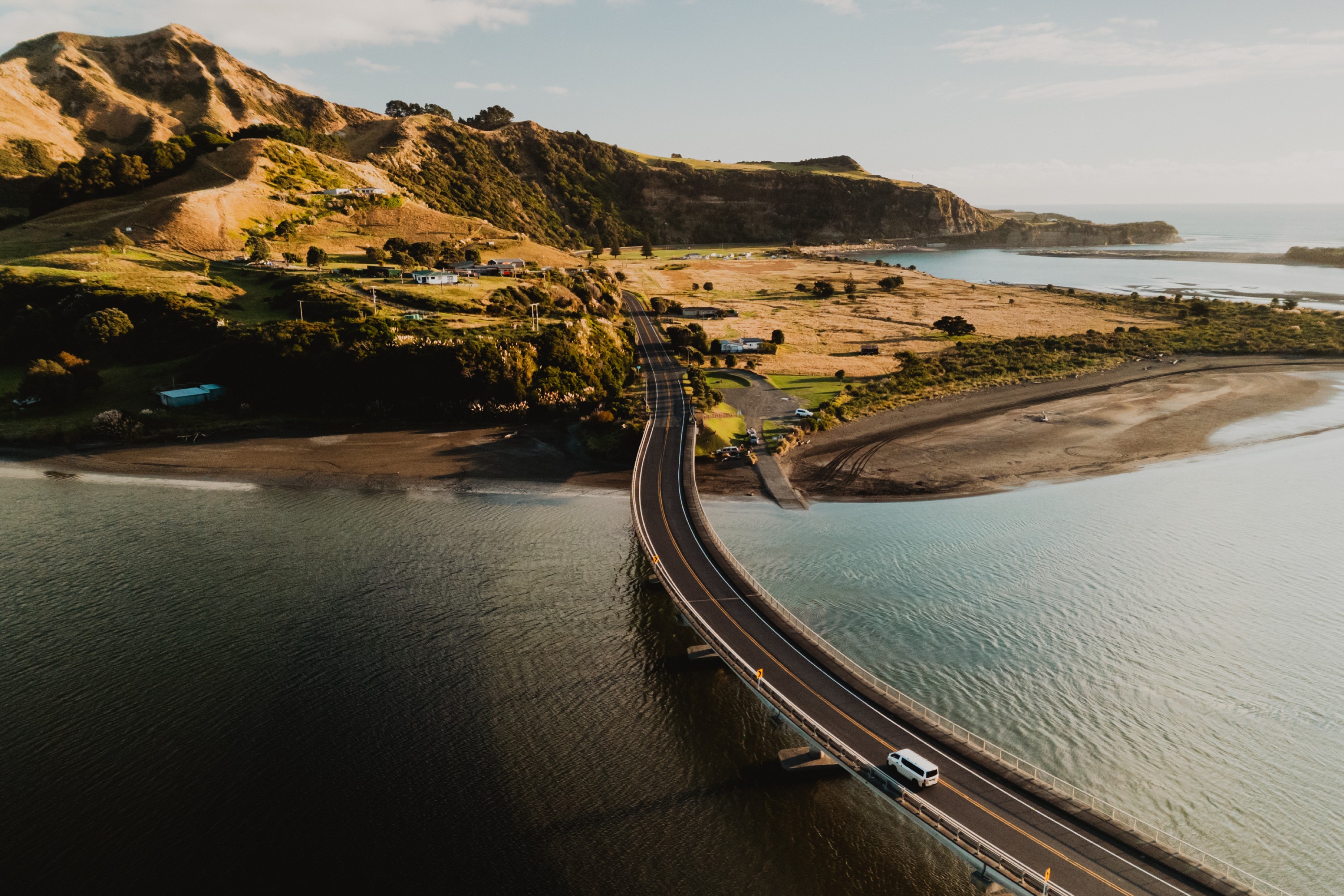
.jpg)
.jpg)
.jpg)


.jpg)
.jpg)
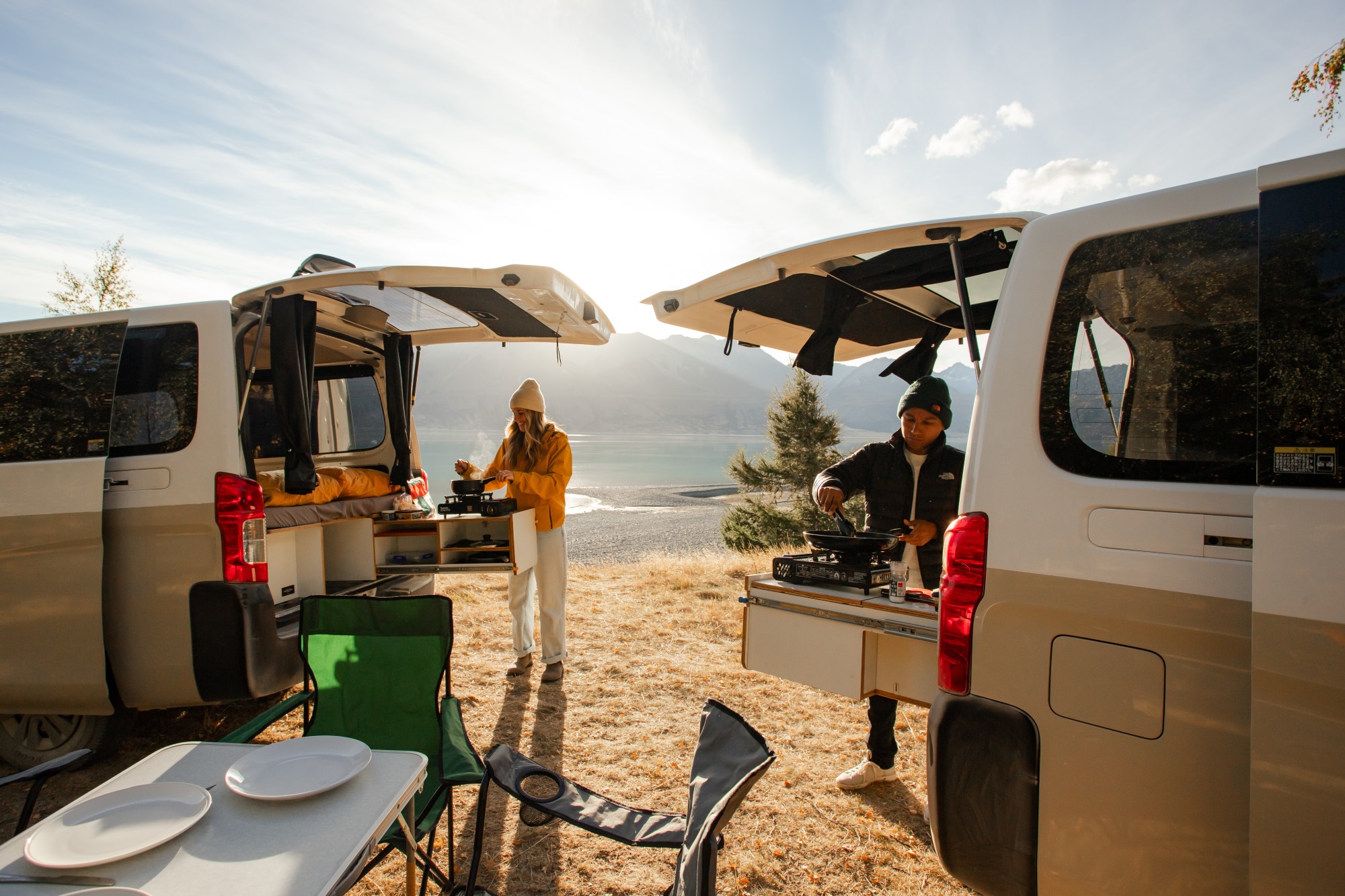


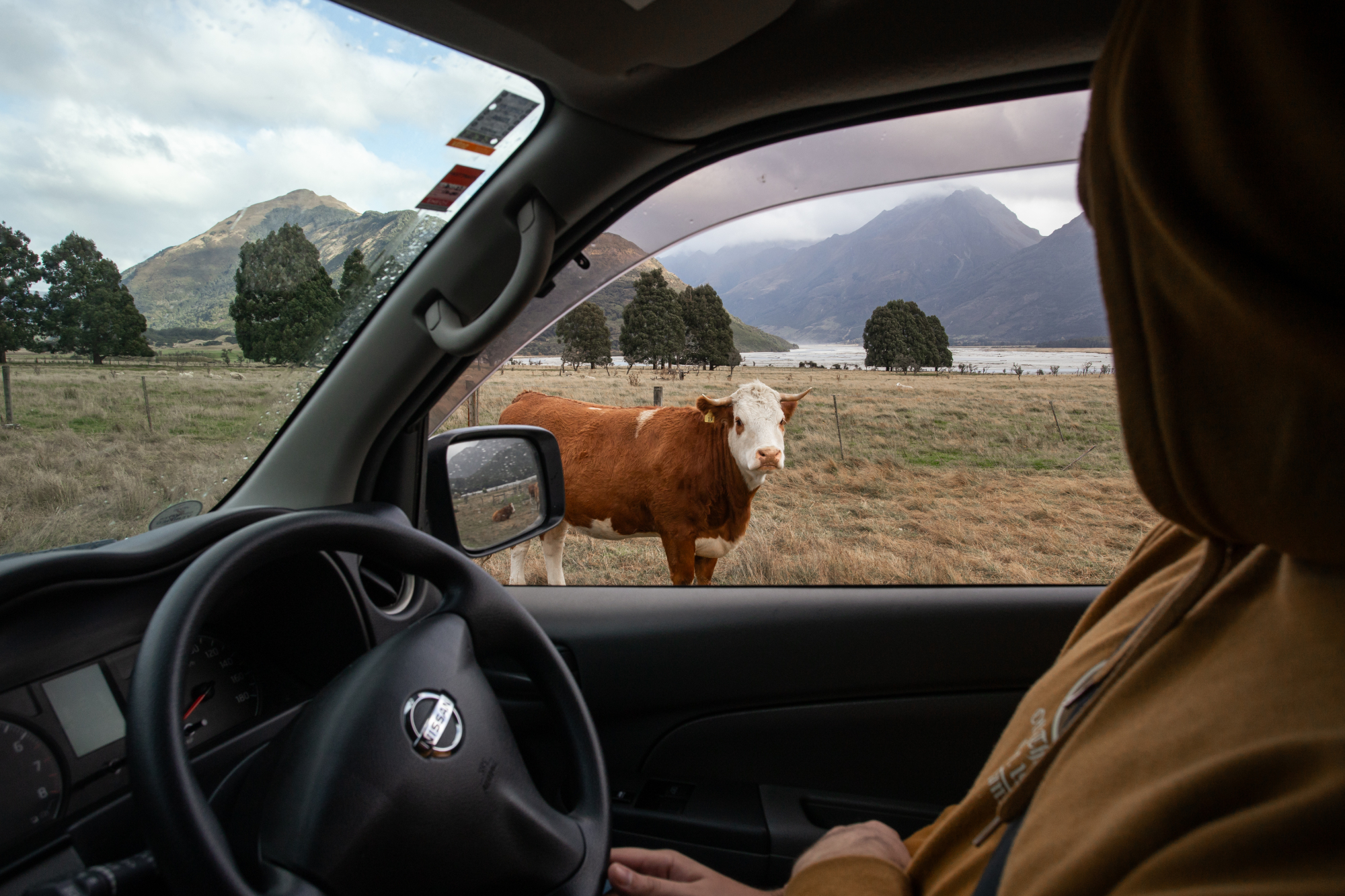
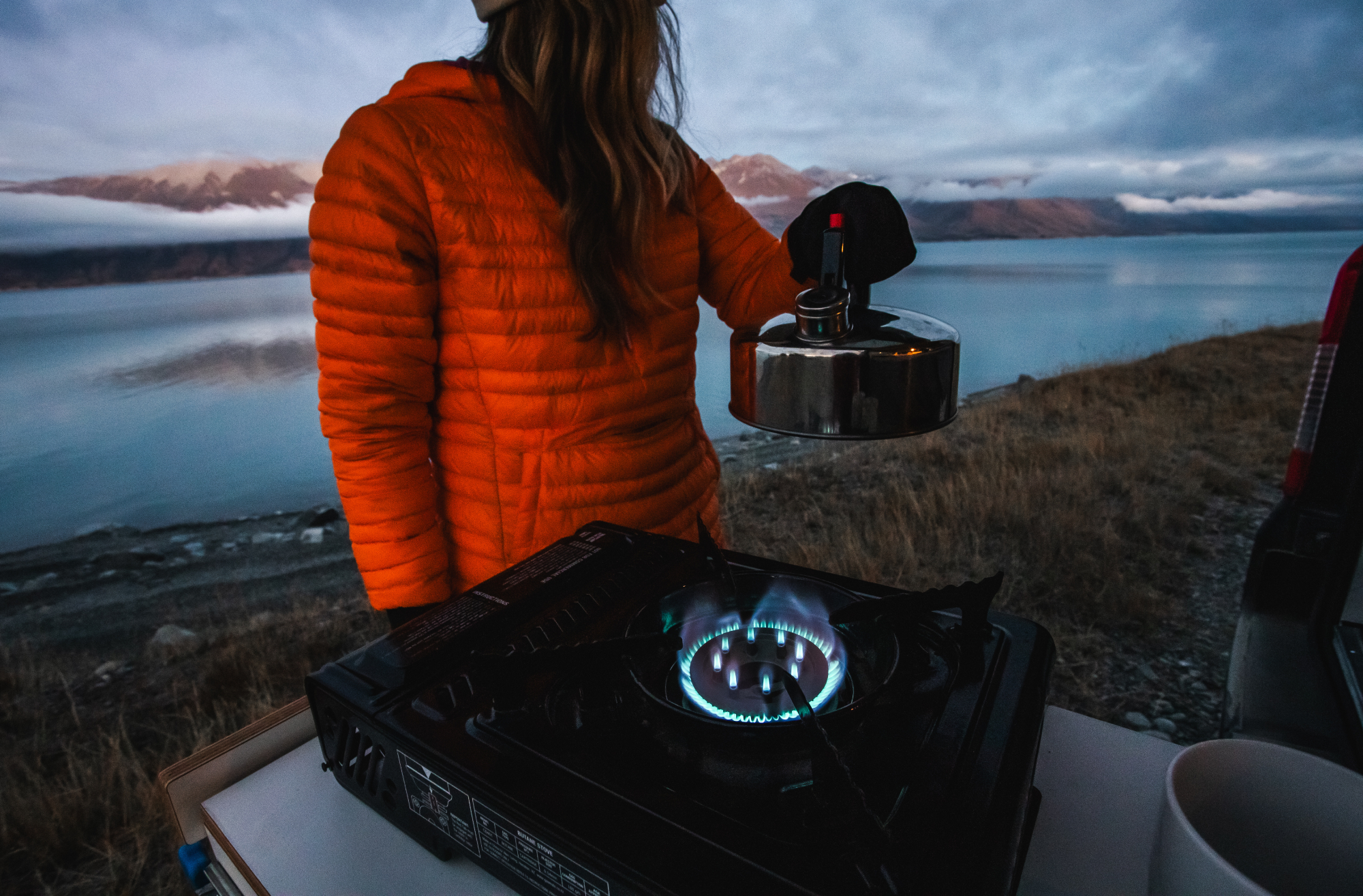
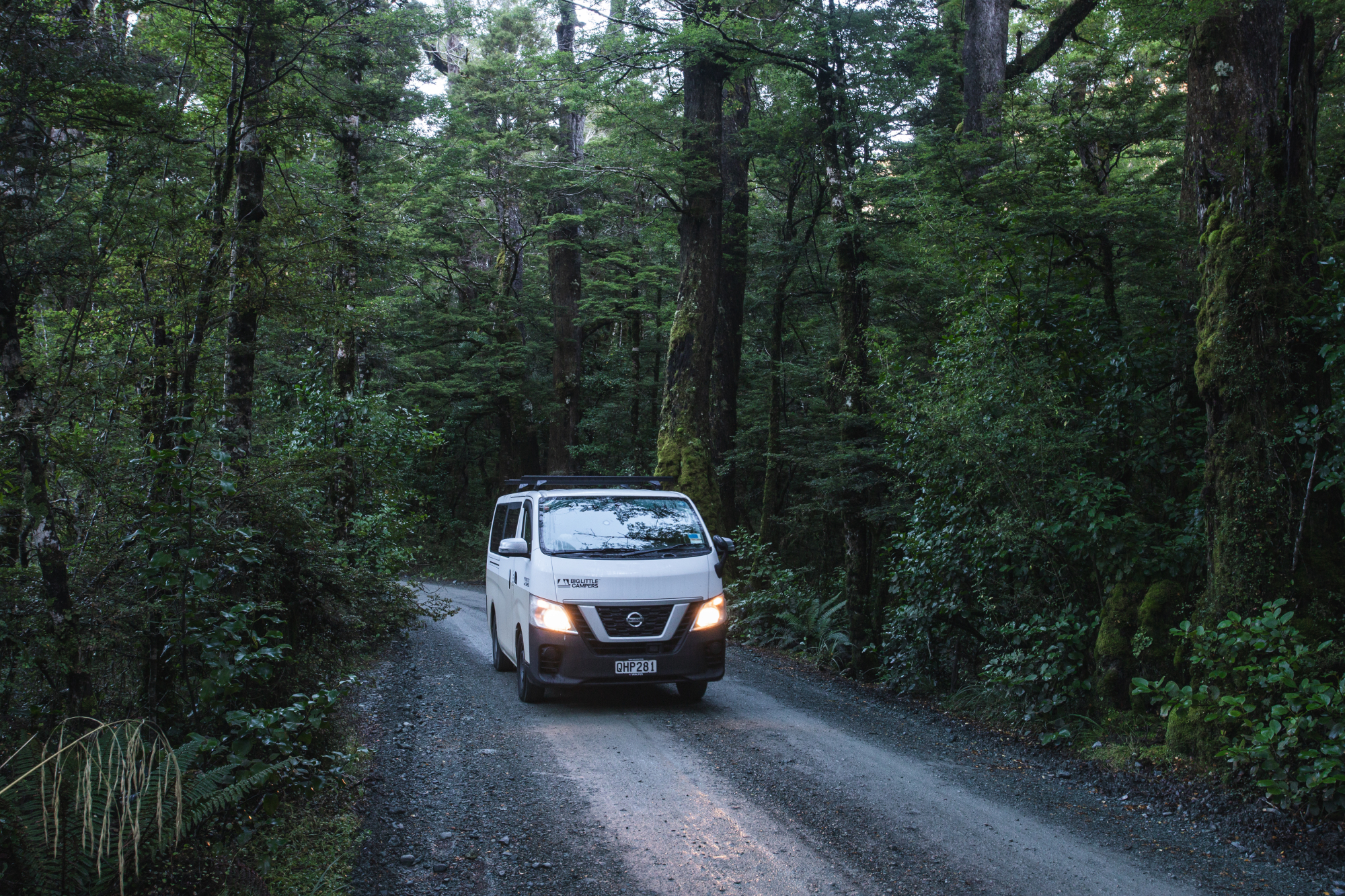

.jpg)
